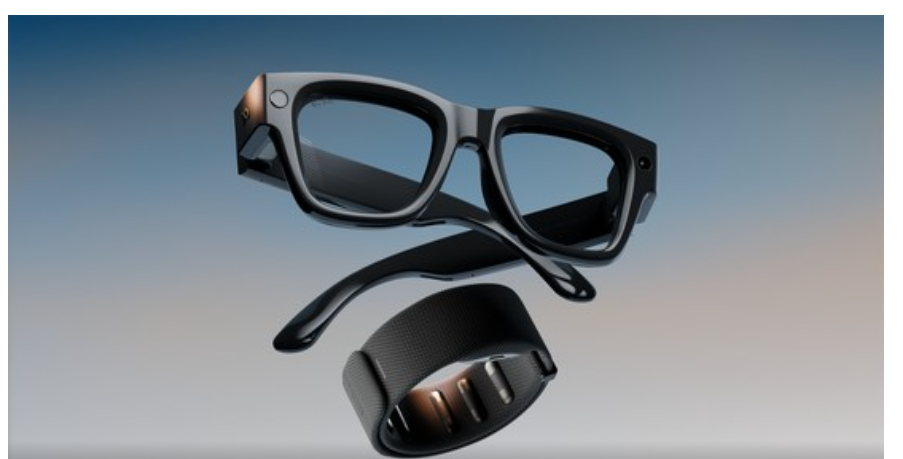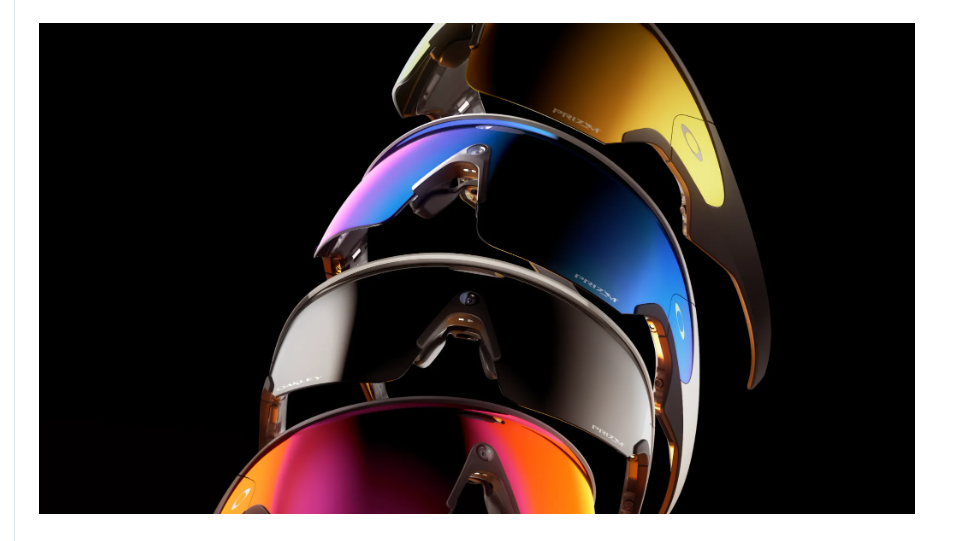For decades, the smartphone has been the center of our digital lives. But a new form factor is emerging one that merges the digital world directly into your field of view. Smart glasses are officially graduating from novelty camera specs to powerful, head-up computers.
Image generated by Google Gemini

The latest drop from Meta, in partnership with Ray-Ban, is the clearest signal yet that we are transitioning toward a more integrated, spatial reality. This shift is not just an update; it’s a fundamental change in how we interact with information and AI.
Here is the breakdown of the most important new smart glasses on the market, led by the latest evolution of the Ray-Ban Meta line.
1. The Headliner: Meta Ray-Ban Display

Meta’s newest offering is the most significant step toward truly mainstream Augmented Reality (AR) glasses. They maintain the classic, discreet style of Ray-Ban Wayfarers while adding a critical piece of technology: a display.
Image From Meta
The Key Innovations That Matter
- Integrated Heads-Up Display (HUD): A small, bright, and crisp color display is projected onto the inside of the right lens, visible only to the wearer and positioned subtly below the eye line. This HUD is designed to show essential, glanceable information, such as messages, alerts, real-time translations, notifications, and turn-by-turn walking directions.
- The Neural Band Controller: The futuristic Meta Neural Band wristband is available separately and uses electromyography (EMG) to detect the electrical impulses in your forearm. This allows for control via barely perceptible hand gestures a small pinch, a virtual swipe, or rotation allowing for seamless, truly hands-free interaction with the display. This technology offers a promising solution for navigating the glasses without breaking stride.
- AI with a View: The onboard Meta AI is now visually connected. You can ask it to identify a landmark, translate a sign in a foreign language, or even get visual step-by-step instructions. This means the AI is no longer limited to audio responses; it can provide contextual answers displayed right in your vision.
Verdict: The Meta Ray-Ban Display is not a full-blown AR headset, but it is the strongest attempt yet to make a wearable computer look and feel like normal eyewear. It’s the essential bridge product to a spatial future.
2. The Specialist: Oakley Meta Vanguard

Recognizing that different activities demand different tech, Meta also unveiled the Oakley Meta Vanguard, targeting high-intensity sports and performance.
Image From Meta
- Integrated with the World: These glasses are designed with a sporty, wrap-around frame optimized for athletes. Their unique selling point is direct integration with fitness trackers like Garmin and Strava.
- Real-Time Coaching: Users can ask Meta AI for real-time stats (heart rate, pace, distance) which are delivered through the speakers and/or a subtle internal LED flash when hitting target metrics.
- Auto-Capture: A central camera in the nose bridge can automatically record high-resolution video clips when the wearer hits key performance milestones (e.g., reaching a certain speed or elevation), allowing the device to effortlessly curate highlight reels.
3. The High-End Competitors: True AR and Desktop Screens
While Meta focuses on stylish, AI-powered integration, other high-end competitors are prioritizing immersive AR and desktop-class display capabilities.
| Competitor Example | Primary Focus | Key Feature / Innovation |
| XREAL (formerly Nreal) | Wearable Desktop Screens | Plugs into USB-C devices (phones, laptops, Steam Deck) to create a floating virtual screen equivalent to 120+ inches. Excellent for media and gaming on the go. |
| VITURE Pro XR | Mixed Reality Immersion | Features electrochromic film to block external light for true immersion, creating a stunning, large virtual desktop environment for work or entertainment. |
| Vuzix | Enterprise & Industrial AR | Models like the Vuzix Blade 2 use high-brightness waveguide optics to deliver heads-up work instructions, remote expert support, and real-time captions directly into the worker’s field of view. This tech is designed for rugged, professional use cases. |
The Meta-Lesson: AI is the Real Display
The true thread connecting all these new smart glasses is not the screen it’s Artificial Intelligence.
The display is merely the output mechanism. The power lies in the AI’s ability to “see what you see, hear what you hear,” and provide information contextually, without you ever having to pull out a phone. This convergence of sleek design, subtle AR display, and powerful, vision-enabled AI is defining the next era of personal computing.
The Golden Question: Will the Meta Ray-Ban Display, with its sleek look and Neural Band control, finally convince the general public to put a computer on their face? Or will high-end immersion devices like XREAL and VITURE capture the productivity and entertainment market first?
The interface is moving off the phone and onto your face. Tell us in the comments: Are you ready to wear your AI?
Disclaimer: This blog post was generated with the help of artificial intelligence. Readers are encouraged to verify facts independently.


